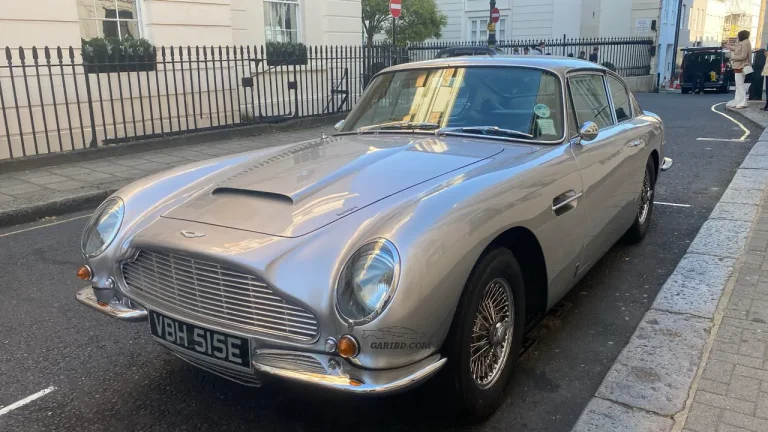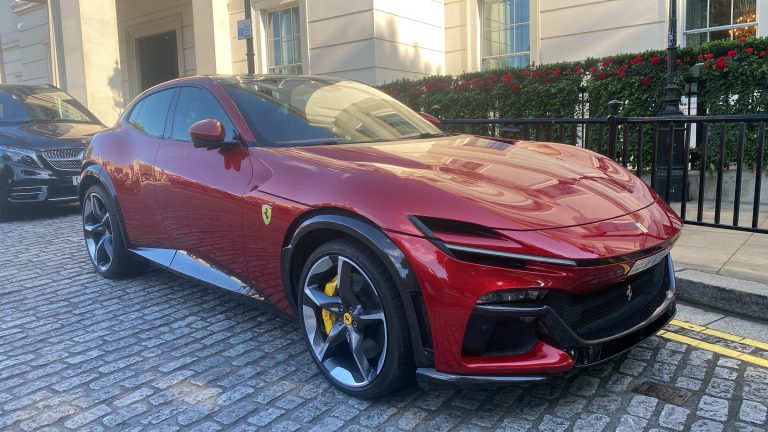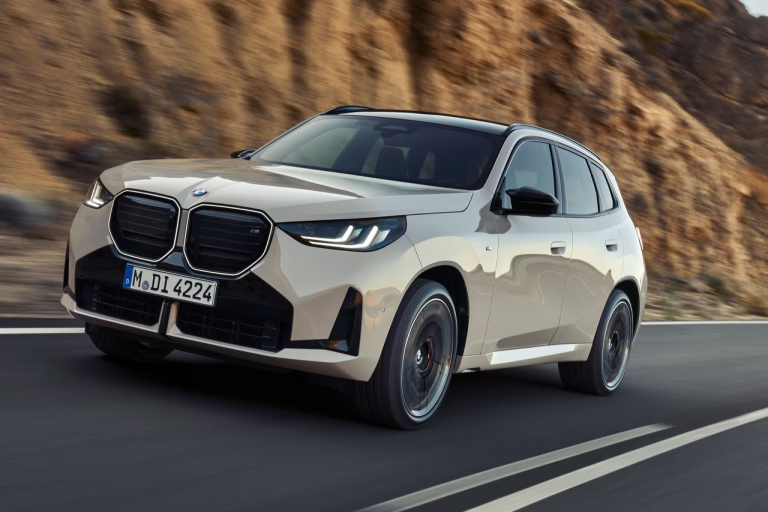The Porsche 911 Carrera 4 from the 996 generation (1997-2004) is a pivotal car in Porsche’s history. This particular model, a timeless dark blue convertible with a black soft top, perfectly blends the classic 911 silhouette with a touch of early-2000s design. It’s an ideal choice for both seasoned collectors and those new to the world of Porsches.
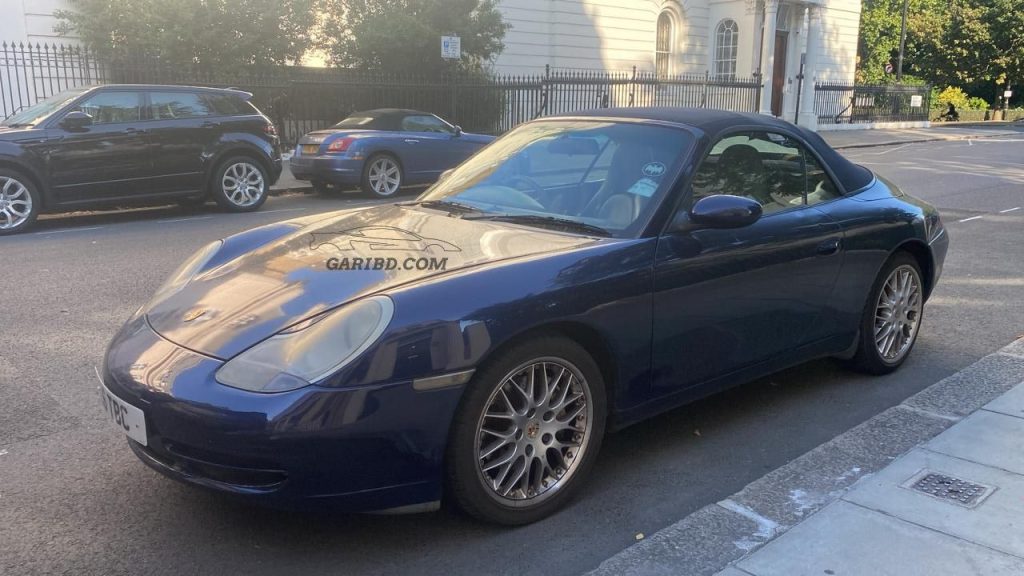
Design and Exterior
The 996 marked a bold new era for Porsche, introducing the first complete redesign for the 911 in nearly 35 years. Moving away from the air-cooled 993, it adopted a more aerodynamic body and the now-iconic “fried egg” headlights that instantly set it apart from its predecessors. This Carrera 4 Cabriolet features wide rear arches, multi-spoke alloy wheels, and a clean, understated design. The convertible soft top folds away for a pure open-air driving experience, a key hallmark of the 911 Cabriolet.
At the rear, the Carrera 4 badge signifies its all-wheel-drive system. The slatted engine cover hints at the powerful flat-six engine beneath, while dual exhaust tips reinforce its sporting character.
Engine and Performance
Powering the 996 Carrera 4 is a naturally aspirated flat-six engine that lies at the car’s heart. Engine displacement varied by model year: 3.4 liters in the earlier cars (1999–2001) and a slightly larger 3.6 liters in the later (2002–2004) versions. This unit produces between 300 and 320 horsepower, ensuring smooth, linear acceleration accompanied by the classic Porsche flat-six howl.
Drive is delivered to all four wheels via a choice of either a 6-speed manual or a 5-speed Tiptronic automatic transmission. This all-wheel-drive system significantly boosts stability and traction, instilling greater confidence in the driver, particularly when facing slick or challenging road conditions. The Carrera 4 is a fast performer, achieving the 0 to 60 mph sprint in approximately 5 seconds and boasting a top speed over 170 mph (273 km/h).
Interior and Driving Experience
The interior of the Carrera 4 boasts a functional, driver-focused layout, typical of Porsche design. High-quality materials define the cabin, featuring supportive leather sport seats and intuitively placed controls. While lacking contemporary infotainment technology, the car offered desirable period-specific amenities such as climate control and a premium sound system. Remarkably, with the convertible top up, the cabin is well-insulated, keeping wind and road noise surprisingly low.
On the road, the 996 strikes an excellent balance between everyday usability and sports car thrill. Its all-wheel-drive system provides superior grip without dulling the precise steering feel that is a Porsche trademark. Enthusiasts often view the 996 generation as the perfect bridge; it sits squarely between the raw, analog experience of its air-cooled predecessors and the more technology-laden luxury of later 911 models, delivering a uniquely engaging and connected driving experience.
Collectability and Value
After years of being relatively unappreciated, the 996-era 911 is finally coming into its own. While it was once eclipsed by more expensive, older air-cooled cars, this generation now offers an accessible and rewarding gateway into Porsche ownership. As more drivers acknowledge its pivotal role as the brand’s first water-cooled sports car, its market value continues to rise. This makes the 996 a savvy purchase for those seeking a true future classic.
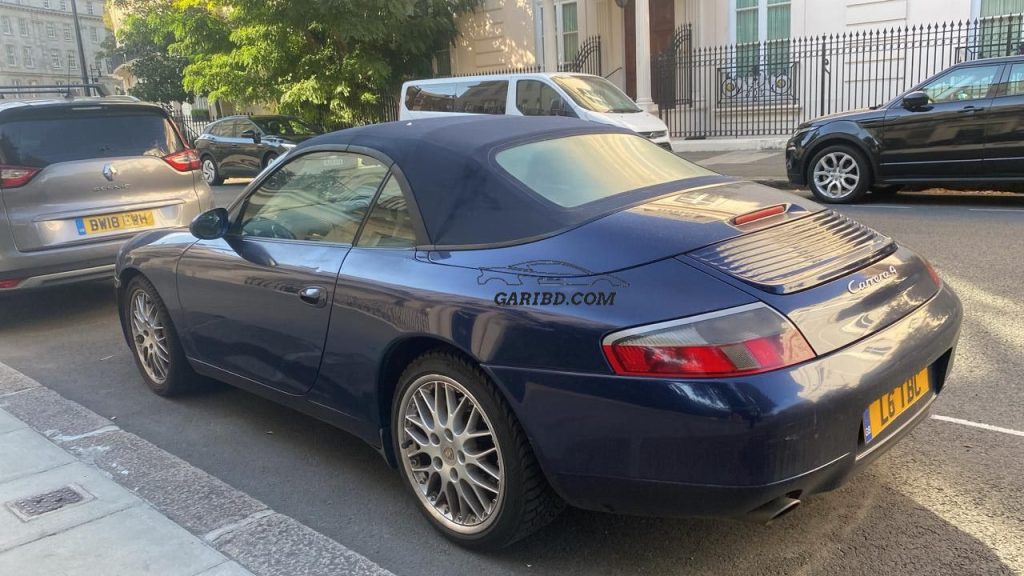
Conclusion
The 996 Carrera 4 Cabriolet is a testament to everything that defines the 911 icon: a thrilling ride, practical capabilities, and design that transcends generations. Equipped with an open top and sure-footed all-wheel drive, this model stands as a distinctive piece of Porsche history, seamlessly connecting the lineage of classic and contemporary engineering. From city cruising to spirited drives on twisting roads, the 996 delivers a pure, unadulterated experience—making it a driver’s car destined for future classic recognition.

